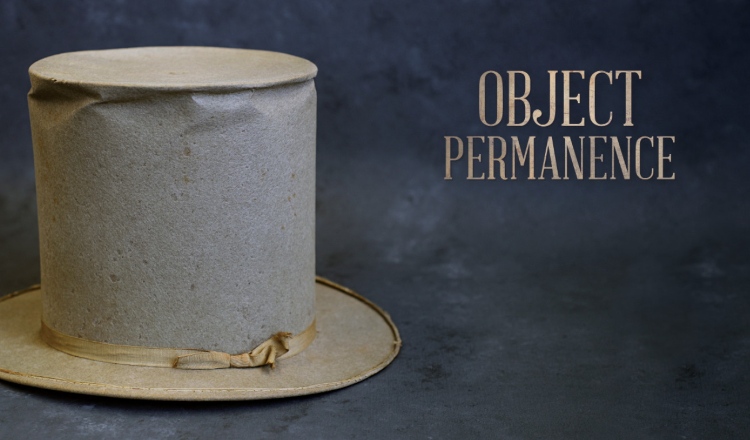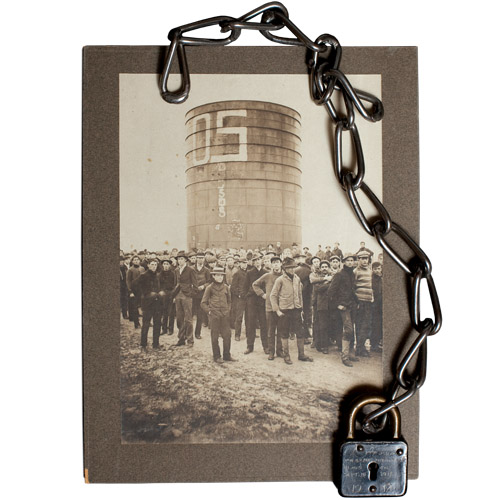
Courtesy of the Virginia Kelly Karnes Archives and Special Collections Research Center, Purdue University Libraries
131. Tank Scrap Chain and Padlock
In one of the University’s most raucous and violent rituals, the early freshmen and sophomore classes battled one another for the right to paint their class years on the water tank located on the southern edge of Grand View Cemetery on North Salisbury Street. The brawls averaged 30 minutes and attracted crowds of up to 15,000, with enterprising locals even setting up refreshment stands. The scuffles could be quite brutal, resulting in multiple injuries each year. Whichever class won the scrap would use chains and padlocks to shackle the losing participants and parade them through downtown Lafayette to the courthouse. The fights were discontinued in 1913 after sophomore Francis Walter Obenchain died from a broken neck.
The water tower still stands along the southern edge of Grandview Cemetery.
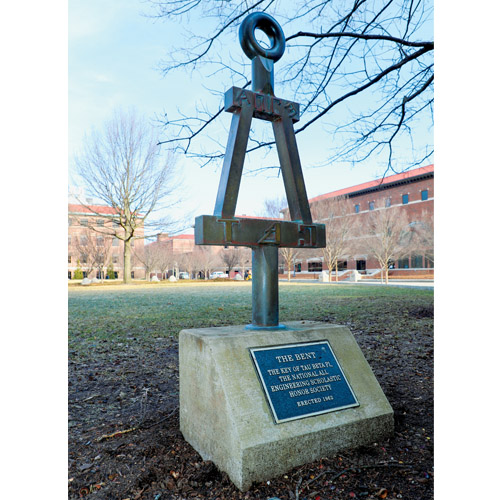
132. Tau Beta Pi Bent
Tau Beta Pi, the second-oldest national engineering honor society in the United States, is the only honor society that represents the entire engineering profession. Purdue’s chapter, founded in 1893, is the third-oldest in the country. The association’s symbol, the Bent, is a watch key in the shape of the bent of a trestle — the load-bearing part of a bridge. Watch keys were common among railroad workers who were dependent upon their pocket watches to ensure trains ran on schedule. Chapter members are tasked with polishing the 18-inch Bent monument, located near the Electrical Engineering Building, and electees are given their own five-inch rough-cast brass Bent to polish prior to initiation. The process takes eight to 10 hours using sandpaper and Brasso.
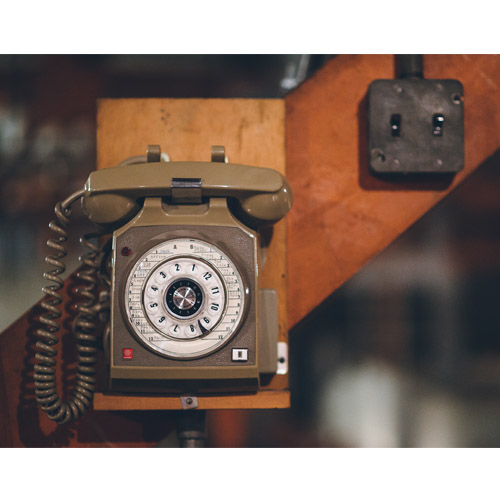
133. Tech Phone
Elliott Hall of Music seats 6,005 people. It’s one of the largest proscenium theaters in the country. The ceiling soars 57 feet above the auditorium, and it’s a climb up 100 steps to get there from the stage floor. Theater technicians adjusting lighting instruments in the ceiling used this phone to call down and communicate with the technical director, office, and other Hall of Music staff.
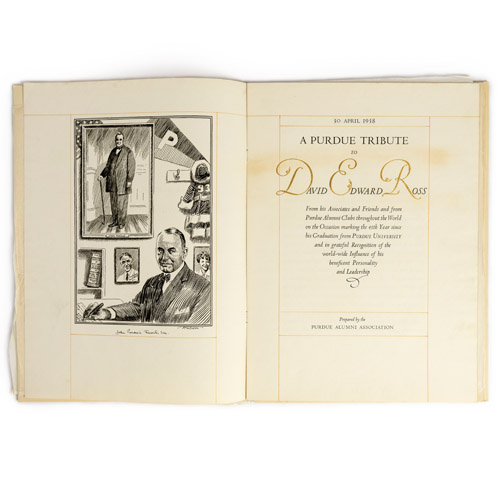
Courtesy of the Virginia Kelly Karnes Archives and Special Collections Research Center, Purdue University Libraries
134. Tribute to David Ross Book
In 1938, the Purdue Alumni Association commissioned a book to honor David Ross (ME’1893), one of the University’s most influential benefactors. The book was a convergence of Purdue legends. It was designed by acclaimed book designer and typographer Bruce Rogers (S’1890, HDR LA’32) and included a frontispiece by Pulitzer Prize-winning political cartoonist John McCutcheon (S’1889, HDR LA’26). Rogers and McCutcheon worked together on the Debris yearbook as students. In the illustration, Ross is depicted seated at a desk with portraits of John Purdue, Edward Elliott (HDR E’47), and Amelia Earhart in the background.
David Ross is buried at the top of Slayter Hill.

135. Trustee Table
The table from the original trustee room in Hovde Hall is now located in the Wabash Dining Room in the Sagamore Restaurant on the second floor of the Purdue Memorial Union. The table is available for reservation for small dining parties. Evidence of the table’s former life can be found in the drawers that line its edge, complete with inkwell holders.
Dine in the Wabash Dining Room in Sagamore Restaurant at the Purdue Memorial Union.
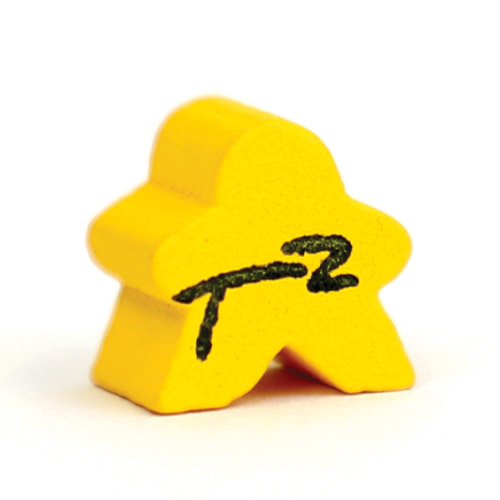
136. Tyler Trent Game Piece
Few things have united Purdue University like #TylerStrong. From being named honorary captain of the football team in 2017 to gaining a national platform after predicting Purdue’s stunning upset of Ohio State University 49–20, Tyler Trent (AS T’18) exhibited strength, resilience, and humility in a way that touched not only West Lafayette but also the nation. Trent died of osteosarcoma on January 1, 2019, at age 20. Thousands attended his funeral in Carmel, Indiana, where wooden game pieces were distributed with a note: “Let this wooden game piece remind you of Tyler, whose love of board games reflects his determination and unwavering hope.” Trent used the moniker T2, even using it as the signature on his driver’s license, because he shared initials with his father, Tony Trent.
Support the Tyler Trent Cancer Research Endowment
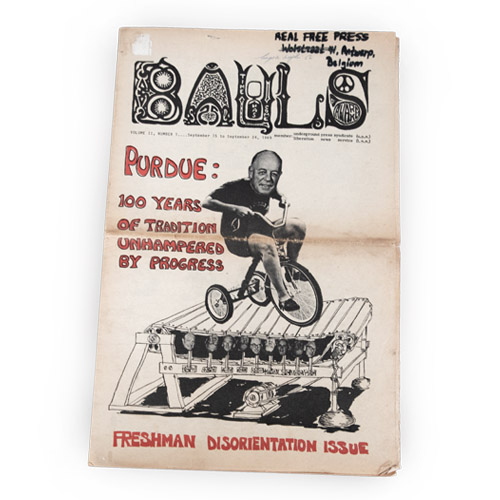
137. Underground Newspaper
During the 1950s and ’60s, Purdue didn’t have a reputation for a culture of student satire or protest more typically found in Ivy League or West Coast colleges and universities. However, campus publications like the Exponent and Rivet quite often poked fun at the sedate West Lafayette campus and university administration in a way that rivaled the more widely known Harvard Lampoon. The Exponent had its own parody as the Purdue Exposer. This 1969 issue of Bauls, an underground newspaper that emerged for a short period in the late 1960s, depicts President Fred Hovde (HDR E’75) rolling over the heads of other university leaders.
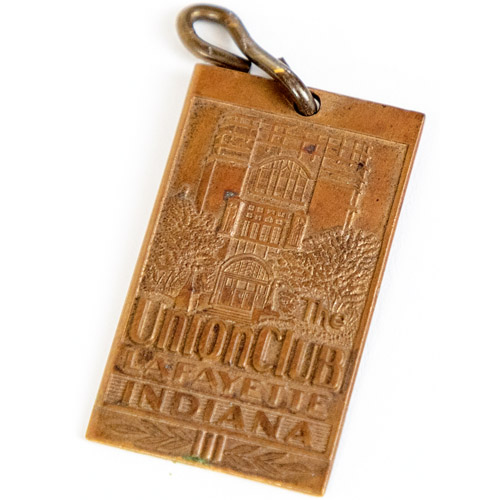
138. Union Club Hotel Key
The first wing of the Union Club Hotel opened in 1929 with 60 rooms. Additional phases were constructed through 1953. Room keys were attached to these brass key tags. The hotel will close in June for a $35 million renovation funded primarily by former trustee Bruce White (M’75), chairman and CEO of White Lodging.
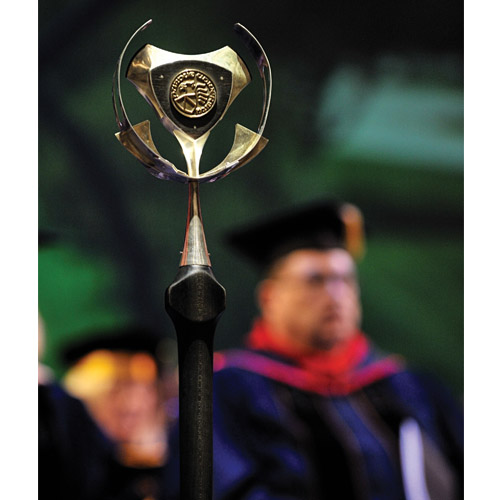
139. University Mace
The mace has an ancient history as a symbol of authority. In the Middle Ages, maces were weapons — giant clubs with spiked iron heads capable of breaking armor. Over time, maces assumed more ceremonial functions, losing their warlike appearance. As a symbol of order and authority, the grand marshal (chair of the University Senate) carries the mace while leading the president and other dignitaries during the commencement procession. The mace was designed and crafted in the 1980s by David Peterson, then a professor of art and design who taught jewelry and metalsmithing.
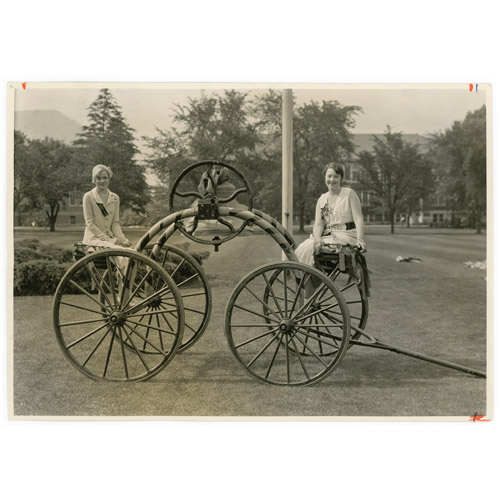
140. Victory Bell
The Victory Bell is nearly as old as the University itself. Dating back to the 1870s, the bell was originally used to signal class periods from its perch on top of the power plant called the Boiler and Gas House. When that structure was torn down in 1903, the bell remained on campus, housed in the locomotive lab. The tradition of ringing what became known as the Victory Bell began in 1904 after Purdue routed Indiana University 27-0. Students paraded the bell across the river to downtown Lafayette. President Winthrop E. Stone eventually grew tired of retrieving the bell from the steps of the Lafayette courthouse and had it buried in a gravel pit where Hovde Hall now stands. It’s a testament to Purdue students’ resourcefulness and determination that it only took three weeks to unearth. The Victory Bell is still wheeled to Ross-Ade Stadium and rung after football victories.

